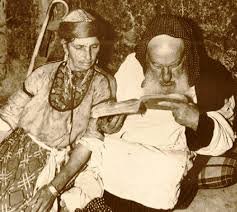culture of morocco
The culture of Morocco reflects the Berber and Arab influences represented by its population. The majority of Morocco's population identifies as Berber and Arab. At least a third of the population speaks an Amazigh language. Following the Islamic conquests, Arab tribes came to Morocco and settled in the low regions, such as Tadla and Doukkala. For example, there are groups called Charkawa and Arbawa who settled in Morocco from Arabia. The Charkawa claimed to be descended from Umar ibn Al-Khattab, the second caliph of Islam.
Literature:
The history of Moroccan literature started in the early Middle Ages. In the era of the Berber dynasties, coinciding with the flowering of Al-Andalus, there were several important Moroccan writers, especially in the fields of religion.
Ethnic groups and languages:
Morocco is considered by some as an Arab-Amazigh country. Others insist on the Amazigh-African identity of Morocco.
Classical Arabic and Tamazight are official language of Morocco. Classical Arabic rather than a mother tongue, and is used in a limited and formal socio-economic and cultural range of activities (like newspapers and official documents), in competition with French. The most common spoken languages of Morocco are Tamazight and Moroccan Arabic.
Linguistically, Amazigh belongs to the Afro-Asiatic group, and has many variants. The three main varieties used in Morocco are Shilha, Central Atlas Tamazight and Riff (also called Tamazight by its speakers). Collectively, they are known as Shelha in Moroccan Arabic, and as Barbaria in the Classical Arabic used in the Middle East. The terms Barbar and Shelha are considered offensive by most Berber activists, who prefer the term Tamazigh.
Shilha (also known locally as Soussia) is spoken in southwest Morocco, in an area between Sidi Ifni in the south, Agadir in the north, and Marrakesh and the Draa/Sous valleys in the east. Central Atlas Tamazight is spoken in the Middle Atlas, between Taza, Khemisset, Azilal, and Errachidia. Riff is spoken in the Rif area of northern Morocco in towns like Nador, Al Hoceima, Ajdir, Tétouan, Taourirt, and Taza.
Most Amazigh embraced Islam quickly, though their non-Arab ethnic and linguistic distinction has resisted the Arab-Islamic influence. Hundreds of Amazigh (Berber) associations have been created to defend their culture and identity in the last few decades in Morocco and Algeria. Newsstands and bookstores in all the major cities are filled with new Berber publications that provide articles and essays about the Amazigh culture and art. In 1994, the state-owned TV station RTM (now TVM) started broadcasting a daily, 10-minute-long news bulletin in the 3 Berber dialects. Berber activists are repeatedly demanding a 50% share of broadcasting time in standardized Berber (Tamazight) on all state-owned TV channels. There is also a national Tamazight channel in Morocco, called Tamazight TV. It opened in 2010, and broadcasts for over 13 hours a day, with an extended broadcast on weekends..
Traditional clothing:
The traditional dress for men and women is called djellaba; a long, loose, hooded garment with full sleeves. The djellaba has a hood that comes to a point called a qob. The qob protects the wearer from the sun or in colder climates, like the mountains, the qob keeps in body heat and protects the face from falling snow. For special occasions, men also wear a red cap called a bernousse, more commonly referred to as a Fez. Women wear kaftans decorated with ornaments. Nearly all men, and most women, wear balgha (بلغه) —- soft leather slippers with no heel, often dyed yellow. Women also wear high-heeled sandals, often with silver or gold tinsel.
The distinction between a djellaba and a kaftan is the hood on the djellaba, while a kaftan does not. Most women’s djellabas are brightly colored and have ornate patterns, stitching, or beading, while men's djellabas are usually plainer and colored neutrally.

Hi! I am a robot. I just upvoted you! I found similar content that readers might be interested in:
https://steemit.com/morocco/@oussamasoujaa/culture-of-morocco